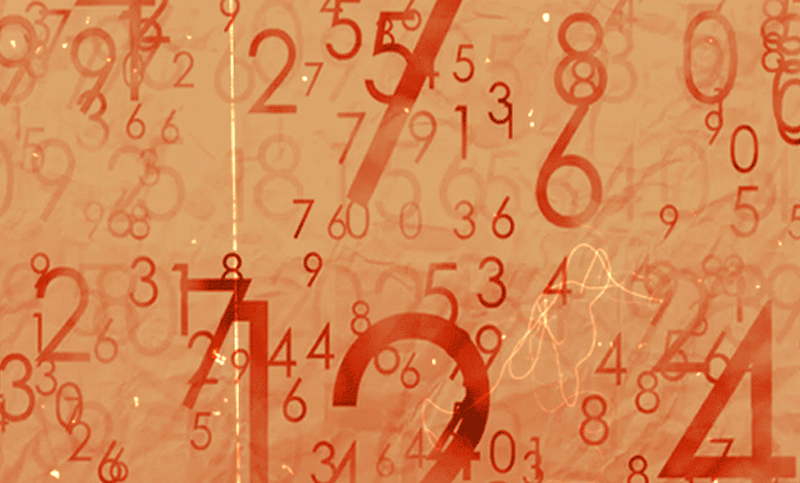Numbers have the power to hook us in, but they can derail a story too. Here’s how to make the numbers add up in your business storytelling.
In tests, 8 out of 10 owners said their cats preferred it
How swayed are you by numbers? Let me elucidate. In a recent poll 75% of respondents said that a number in a subject line or headline was twice as likely to cause them to click and read on.
75% – that’s a big number right? A fat, juicy, convincing number. Why, that’s 75 in every 100. Or 75,000 in 100,000. Or, in this case, 6 in every 8. Because what I should say is that I just conducted that poll on Slack, among all eight of my co-workers, and 6 of them agreed with me.
"We’re led to believe that numbers don’t lie. And that’s at the heart of their power. But in fact, they regularly do."
We’re led to believe that numbers don’t lie. And that’s at the heart of their power. But in fact, they regularly do. Here’s an infamous one.
| We send the EU £350 million every week. Let’s fund our NHS instead|
About the one thing that everyone, on both sides of the debate, can agree upon is that number was a fabrication. An absolute whopper. And even if they don’t lie, then there are some situations where numbers alone can’t hope to tell the whole truth. So here’s our guide to the use of numbers in stories, and stories in numbers.
Numbers in narratives
Any journalist will tell you that a story is knitted together with facts and quotes. Numbers are quintessential facts. If you’re storytelling about the fastest woman on earth, the number is your friend. With the relevance ( 1st) and the scope of your narrative established ( 10.49 seconds – the fastest time over 100m in human history, say) you’re then at liberty to strike out in almost any direction. Her training regime. Her rags to riches story. Her likely use of banned substances. Her influence on an entire generation of female athletes. Way to go.
News stories have some additional qualities. They’re happening right now. Or, they’re unexpected. Or sometimes both. But it’s in that second quality – unexpectedness – which we could also write as ‘novel’or ‘insightful’ – that numbers are especially valuable. A statistic that proves the exception to the rule. Here’s a recent one:
| Asthma inhalers emit the same amount of carbon as a 180 mile drive |
The UK’s National Institute for Health and Care Excellence (NICE) used that statistic to alert asthma sufferers and physicians to the planetary impact of their medicines. The culprit is the hydrofluorocarbons used as propellants. The compelling headline was careful to avoid blaming patients. And the body of the article pointed out that carbon neutral alternatives were available.
Here’s another that masquerades as responsible but is in fact alarmist.
| HRT increases breast cancer risk by one third |
Having got your attention, the report went on to state that 83 in every 1000 women receiving HRT – 8.3% – would go on to develop breast cancer in the following 20 years. That compared with 63 women per 1000 in a test group. So while the percentage risk increased by roughly a third (35%), the increase in absolute risk was 20 women per 1000. That’s actually just 2.0%. Given that HRT is used to treat serious and life-changing conditions, NICE and the Royal College of GPs declined to change their generally positive stance on HRT.
"The more sinister use of numbers is so commonplace, it’s often regarded as savvy, streetwise, and even creative."
That kind of sinister use of numbers is so commonplace, it’s often regarded as savvy, streetwise, and even creative. But when numbers get used to distort emotions in order to gain influence, it’s clearly both damaging and unethical.
Numbers naturally trigger feelings of admiration, inspiration and elation, as well as suspicion and caution. But also envy, aggression and panic. When we deliberately trip that fight/freeze/flight behaviour at the personal level, we’re crossing a line. And it risks creating polarised opinions on the large scale too, as evidenced during the recent US elections.
So while lurid misuse of numbers can create short term impact and even consensus – in the sense that my enemy’s enemy is my friend – it can also create long term hurt and disharmony. Intellectual positions arrived at through the biological shortcut of emotions are very difficult to row back from.
Narratives in numbers
One death is a tragedy, a million deaths is a statistic. Why is that? The numbing of emotions in this way reveals the flip side of numbers in narratives. Sometimes they’re just too big to be meaningful. There’s a bad joke, at the expense of former President George W Bush, that has his National Security Adviser inform him that three Brazilian soldiers have been lost on a UN mission in Baghdad, and George responds with: Wow! Eh, how many’s a brasillion?
"The numbing of emotions in this way reveals the flip side of numbers in narratives. Sometimes they’re just too big to be meaningful."
So now we come to an opposite challenge: to find the narratives in numbers. This is where storytelling becomes more influential than arithmetic. During the COVID 19 pandemic, storytellers shifted their focus from the overwhelming daily tallies of infections, hospitalisations and deaths, to the stories of individual lives, gained and lost. It is the only way for finite minds to wrap themselves around almost infinite suffering. One soul at a time.
"Here is where storytelling becomes more influential than arithmetic"
Here’s a less heartwringing example. What does Pi mean to you? The endstops of this conversation are likely a) a button on a pocket calculator, so useful at high school but not much since, and b) an irrational number, running to an infinite series of decimal places without repeating. One feels banal and the other incomprehensible.
But what about the story of Pi as a number so truthful and original, it’s a hallmark for the authenticity of an entire universe? If you planned on hitchhiking the galaxy, leave the peanuts and towel at home and take a piece of string instead. One of its many uses would be to check the circumference and diameter of any circle you came across. If the ratio between the two was anything other than 22 : 7 (Pi) then you’re no longer in our universe. And strange circles might be the least of your problems.
Barristers are one of many classes of professional that use that genre of storytelling to bring relatability, context, progression, cause and effect to otherwise overwhelming complexity and detail. Image the challenges of weighing the complexities of, say, computerised fraud without narrative, illusion and metaphor.
Ramps, plateaus and the area under the curve
So numbers can galvanise, and numbers can polarise. They can elucidate and they can obfuscate. You have to use numbers skilfully, proportionately and, in my view, ethically.
Yes a number can make a headline. But it can break them too, damaging your story and credibility long term. If you want to figure out which side of the line you want to be on, then this may help.
There are two axes along which to measure the impact of any narrative. On the vertical, there’s the number of people engaged in your narrative at any given time – the ‘trending now’ measure. On the horizontal, the total time your narrative remains, at any level, in the human consciousness. Your total influence is the area under the curve. You’re probably going to need that long tail of interest, so don’t get found out for cooking the figures, or THAT becomes the story.
10 tips for the use of numbers
- Odd numbers make headlines more clickable than even ones. Unexpectedly high and precise numbers are even more clickable. ‘23 reasons why you should leave him’ is much more compelling than ‘10 reasons he needs to go’.
- Numbered lists in blogs might be a cliche, but they break up the text, make the reader feel like they’re getting somewhere, and keep people with you.
- They’re also very easy to write.
- Like this.
- Do numbers have a gender? Apparently we commonly think of odd numbers as being masculine and even numbers as feminine. https://www.frontiersin.org/articles/10.3389/fpsyg.2015.00810/full
- Numbers grab attention, so if you want them to stand out write 79% rather than seventy-nine per cent. (And if you don’t, do it the other way around.)
- Precision adds weight to your claims. So ‘Last year 5,000 people signed up to our programme’ is less compelling than ‘5,031.’
- Always question the number in any headline…





What do you think?